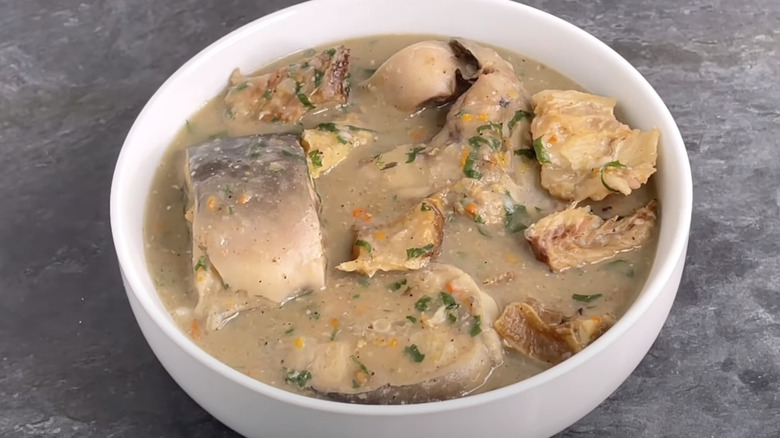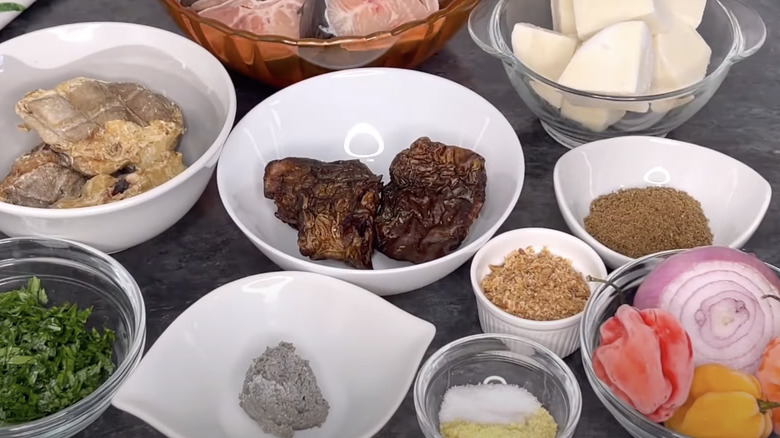What Makes Nsala Different From Other Nigerian Soups
Nigerian cuisine is spicy, vibrant, and bursting with complex flavors. Many Nigerian stews and soups like banga, eka, and ora are characterized by spiced meat, fish, yams, or other starches cooked in a flavorful stock with a distinctly red hue. The culprit of this bright reddish-orange coloring is palm oil, a key ingredient in West African cooking. Palm oil is so common, in fact, that nsala soup is defined in part by its absence.
Ofe Nsala is an Eastern Nigerian soup consisting of catfish, yams, and a blend of spice mixtures and herbs stewed in fish stock. Ofe Nsala in the language of Igbo means "White soup," which connotes the off-white coloring of its broth due to a lack of palm oil. Palm oil has a strong smoky, floral flavor and a heavy, rich mouthfeel that stands up to the spicy and umami profiles of Nigerian seasonings and proteins. Fish and yams are common ingredients in many West African and Nigerian stews, while palm oil usually supplies the ultra-rich foundation.
Ofe Nsala uses both fresh and dried fish along with a spicy pepper-like seasoning called uziza and fermented sesame paste known as ogiri. Its intense umami profile gets an earthy sweet complement from hearty chunks of white yams, which are often pureed or mashed into the nsala stock to create its namesake coloring.
Ofe Nsala: Variations and accompaniments
Ofe Nsala's two main ingredients are catfish and yams, but there are many variations and options to customize its ingredients and flavor profile. Many recipes add goat meat, chicken, or cow intestines for extra protein. The stock uses a blend of dried fish and native seasonings, like the cheesy, funky ogiri and a blend of peppery uziza leaves and seeds. White yams are very starchy, often pounded, and used as a soup thickener.
In addition to dried fish and catfish, many recipes top nsala with boiled shrimp for an added layer of oceanic umami. Onion and habanero peppers are often added to the soup's foundation for an aromatic and spicy complement to the wealth of different umami ingredients. Pounded yam is a side dish often enjoyed alongside a bowl of nsala. Other common side dishes to accompany Ofe nsala include pounded semolina and fufu, a dense doughy side dish of boiled and pounded cassava, taro, or plantain.

